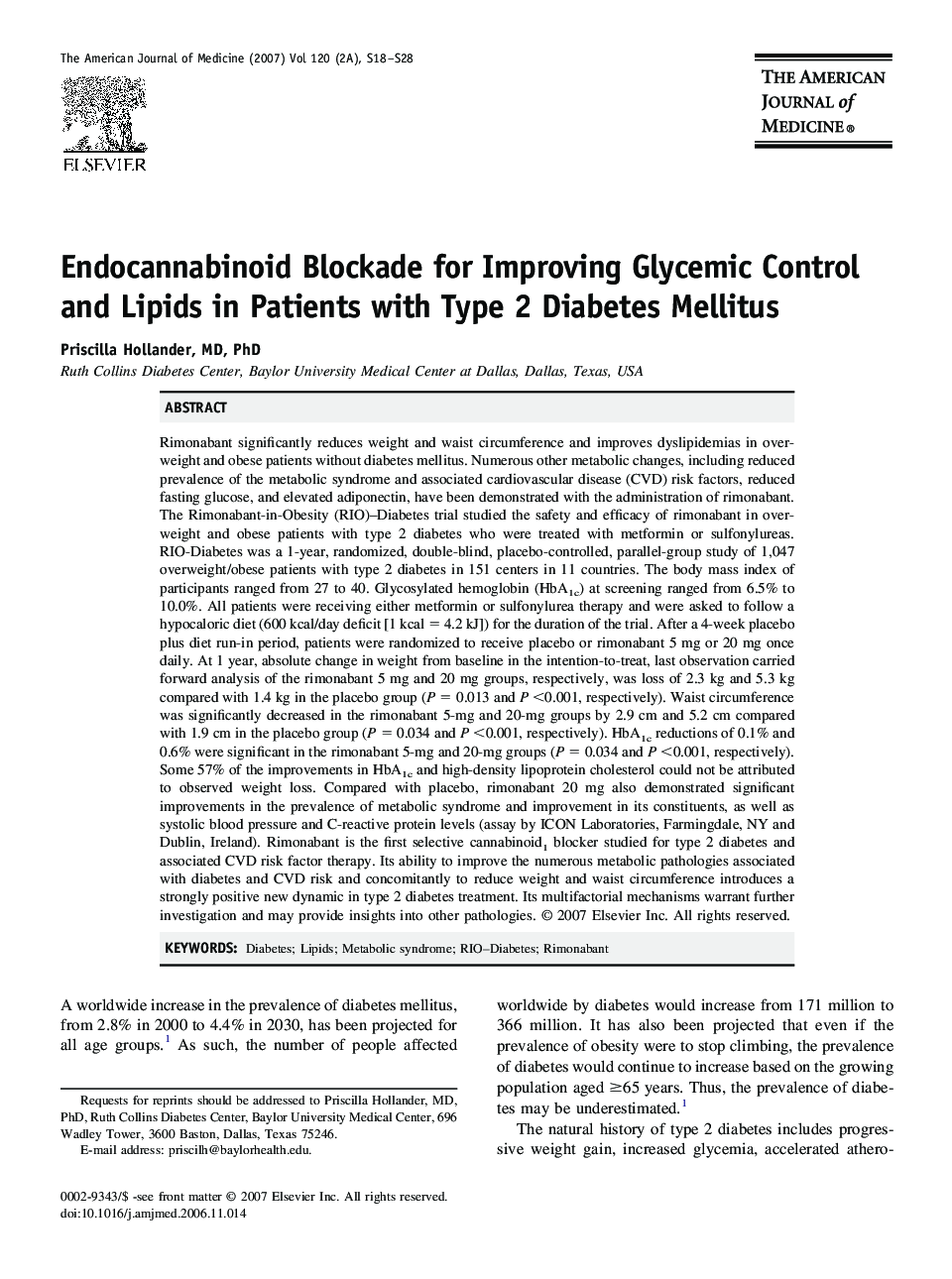| کد مقاله | کد نشریه | سال انتشار | مقاله انگلیسی | نسخه تمام متن |
|---|---|---|---|---|
| 2721022 | 1566266 | 2007 | 11 صفحه PDF | دانلود رایگان |

Rimonabant significantly reduces weight and waist circumference and improves dyslipidemias in overweight and obese patients without diabetes mellitus. Numerous other metabolic changes, including reduced prevalence of the metabolic syndrome and associated cardiovascular disease (CVD) risk factors, reduced fasting glucose, and elevated adiponectin, have been demonstrated with the administration of rimonabant. The Rimonabant-in-Obesity (RIO)–Diabetes trial studied the safety and efficacy of rimonabant in overweight and obese patients with type 2 diabetes who were treated with metformin or sulfonylureas. RIO-Diabetes was a 1-year, randomized, double-blind, placebo-controlled, parallel-group study of 1,047 overweight/obese patients with type 2 diabetes in 151 centers in 11 countries. The body mass index of participants ranged from 27 to 40. Glycosylated hemoglobin (HbA1c) at screening ranged from 6.5% to 10.0%. All patients were receiving either metformin or sulfonylurea therapy and were asked to follow a hypocaloric diet (600 kcal/day deficit [1 kcal = 4.2 kJ]) for the duration of the trial. After a 4-week placebo plus diet run-in period, patients were randomized to receive placebo or rimonabant 5 mg or 20 mg once daily. At 1 year, absolute change in weight from baseline in the intention-to-treat, last observation carried forward analysis of the rimonabant 5 mg and 20 mg groups, respectively, was loss of 2.3 kg and 5.3 kg compared with 1.4 kg in the placebo group (P = 0.013 and P <0.001, respectively). Waist circumference was significantly decreased in the rimonabant 5-mg and 20-mg groups by 2.9 cm and 5.2 cm compared with 1.9 cm in the placebo group (P = 0.034 and P <0.001, respectively). HbA1c reductions of 0.1% and 0.6% were significant in the rimonabant 5-mg and 20-mg groups (P = 0.034 and P <0.001, respectively). Some 57% of the improvements in HbA1c and high-density lipoprotein cholesterol could not be attributed to observed weight loss. Compared with placebo, rimonabant 20 mg also demonstrated significant improvements in the prevalence of metabolic syndrome and improvement in its constituents, as well as systolic blood pressure and C-reactive protein levels (assay by ICON Laboratories, Farmingdale, NY and Dublin, Ireland). Rimonabant is the first selective cannabinoid1 blocker studied for type 2 diabetes and associated CVD risk factor therapy. Its ability to improve the numerous metabolic pathologies associated with diabetes and CVD risk and concomitantly to reduce weight and waist circumference introduces a strongly positive new dynamic in type 2 diabetes treatment. Its multifactorial mechanisms warrant further investigation and may provide insights into other pathologies.
Journal: The American Journal of Medicine - Volume 120, Issue 2, Supplement 1, February 2007, Pages S18–S28